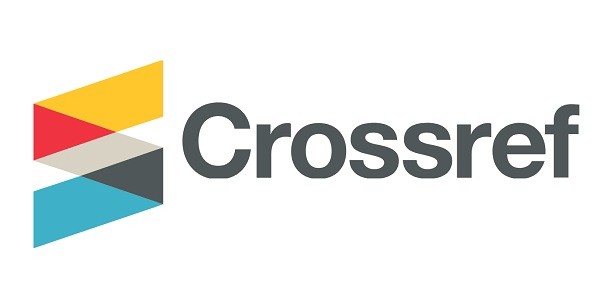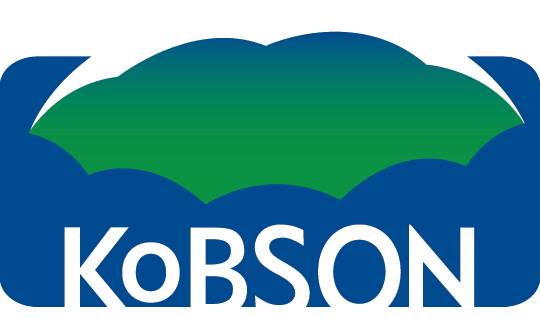DOI: 10.5937/jaes0-37006
This is an open access article distributed under the CC BY 4.0

Volume 20 article 1022 pages: 1175-1183
Using solar energy to cover heating loads of building is a clean and unconventional way that can help reduce electricity consumption. Problems of the cost of energy and environmental pollution are among the most important challenges facing humanity at the present time. And as most of the energy is used for heating and ventilation, thus the need to find renewable sources of energy has become a pressing need. In this direction Trombe wall, which is a classical passive solar wall, has become one of the most important heating and ventilation technologies of buildings. In the present work a three-dimensional numerical study of thermal energy performance for Trombe wall utilizing paraffin wax as PCM was presented. The effect of PCM thickness was studied as (2, 3, 4 and 5 cm). A FORTRAN-90 computer program was built to solve a three-dimensional, turbulent Navier stokes and energy equations in addition to enthalpy transforming method for PCM with explicit scheme based on finite volume method. Numerical results of the present code were validated by comparing them with previous experimental results and a good agreement was noted. The results show that a 2 cm thick PCM is an optimal thickness, where the percentage rates of increasing in air temperature over ambient temperature at day hours (10 am, 12 pm, 5 pm, 10 pm and 7 am of the next day) were (37.8, 19.5, 30.7, 60 and 69.2%) respectively, compared to (33.5, 15.2, 25.9, 53.3 and 65.3) % respectively for a 5 cm wax calculated at the same hours.
1. Peng, C., Yan, D., Guo, S., Hu, S., & Jiang, Y. (2015). Building energy use in China: ceiling and scenario. Energy and Buildings, 102, 307-316. DOI: 10.1016/j.enbuild.2015.05.049
2. Abbas, H., Jalil, J. M., & Ahmed, S. T. (2021). Experimental Investigation of The Optimal Location of PCM Capsules in a Hollow Brick Wall. Engineering and Technology Journal, 39(5), 846-858. DOI: 10.30684/etj.v39i5A.1980
3. Liu, Y., Yang, L., Zheng, W., Liu, T., Zhang, X., & Liu, J. (2018). A novel building energy efficiency evaluation index: Establishment of calculation model and application. Energy Conversion and Management, 166, 522-533. DOI: 10.1016/j.enconman.2018.03.090
4. Mao, P., Li, J., Tan, Y., Qi, J., & Xiong, L. (2018). Regional suitability of climate-responsive technologies for buildings based on expert knowledge: A China study. Journal of Cleaner Production, 204, 158-168. DOI: 10.1016/j.jclepro.2018.08.274
5. Liu, J., Liu, Y., Yang, L., Liu, T., Zhang, C., & Dong, H. (2020). Climatic and seasonal suitability of phase change materials coupled with night ventilation for office buildings in Western China. Renewable Energy, 147, 356-373. DOI: 10.1016/j.renene.2019.08.069
6. Liu, Y., Hou, L., Yang, Y., Feng, Y., Yang, L., & Gao, Q. (2020). Effects of external insulation component on thermal performance of a Trombe wall with phase change materials. Solar Energy, 204, 115-133. DOI: 10.1016/j.solener.2020.04.010
7. Elghamry, R., & Hassan, H. (2020). Experimental investigation of building heating and ventilation by using Trombe wall coupled with renewable energy system under semi-arid climate conditions. Solar Energy, 201, 63-74. DOI: 10.1016/j.solener.2020.02.087
8. Wu, S. Y., Xu, L., & Xiao, L. (2020). Performance study of a novel multi-functional Trombe wall with air purification, photovoltaic, heating and ventilation. Energy Conversion and Management, 203, 112229. DOI: 10.1016/j.enconman.2019.112229
9. Salih, S. M., Jalil, J. M., & Najim, S. E. (2020). Comparative study of novel solar air heater with and without latent energy storage. Journal of Energy Storage, 32, 101751. DOI: 10.1016/j.est.2020.101751
10. Hu, Z., Zhang, S., Hou, J., He, W., Liu, X., Yu, C., & Zhu, J. (2020). An experimental and numerical analysis of a novel water blind-Trombe wall system. Energy Conversion and Management, 205, 112380. DOI: 10.1016/j.enconman.2019.112380
11. Wu, S. Y., Yan, X. Q., & Xiao, L. (2020). Numerical analysis on geometric and shape parameters of solar dual-catalytic Trombe wall performance. Solar Energy, 199, 460-473. DOI: 10.1016/j.solener.2020.02.058
12. Omara, A. A., & Abuelnuor, A. A. (2020). Trombe walls with phase change materials: A review. Energy Storage, 2(6), e123. DOI: 10.1002/est2.123
13. [13] Lohmann, V., & Santos, P. (2020). Trombe wall thermal behavior and energy efficiency of a light steel frame compartment: Experimental and numerical assessments. Energies, 13(11), 2744. DOI: 10.3390/en13112744
14. [14] Zhou, L., Huo, J., Zhou, T., & Jin, S. (2020). Investigation on the thermal performance of a composite Trombe wall under steady state condition. Energy and Buildings, 214, 109815. DOI: 10.1016/j.enbuild.2020.109815
15. [15] Hu, Z., Zhang, S., Hou, J., He, W., Liu, X., Yu, C., & Zhu, J. (2020). An experimental and numerical analysis of a novel water blind-Trombe wall system. Energy Conversion and Management, 205, 112380. DOI: 10.1016/j.enconman.2019.112380
16. Hong, X., Leung, M. K., & He, W. (2019). Effective use of venetian blind in Trombe wall for solar space conditioning control. Applied Energy, 250, 452-460. DOI: 10.1016/j.apenergy.2019.04.128
17. Ahmed, O. K., Hamada, K. I., & Salih, A. M. (2019). Enhancement of the performance of Photovoltaic/Trombe wall system using the porous medium: Experimental and theoretical study. Energy, 171, 14-26. DOI: 10.1016/j.energy.2019.01.001
18. [18] Sá, A. B., Boaventura-Cunha, J., Lanzinha, J. C., & Paiva, A. (2017). An experimental analysis of the Trombe wall temperature fluctuations for high range climate conditions: Influence of ventilation openings and shading devices. Energy and Buildings, 138, 546-558. DOI: 10.1016/j.enbuild.2016.12.085
19. Midland Refineries Company MRC / Daura Refineries, Ministry of Oil, Iraq.
20. Jalil, J. M., & Salih, S. M. (2020). Analysis of Thermal and Insulation Performance of Double Glazed Window Doped With Paraffin Wax. Engineering and Technology Journal, 38(3), 383-393. DOI: 10.30684/etj.v38i3A.448
21. Launder, Brian Edward, and Dudley Brian Spalding. (1983) "The numerical computation of turbulent flows." In Numerical prediction of flow, heat transfer, turbulence and combustion, pp. 96-116. Pergamon,
22. Abbas, H. M., Jalil, J. M., & Ahmed, S. T. (2021). Experimental and numerical investigation of PCM capsules as insulation materials inserted into a hollow brick wall. Energy and Buildings, 246, 111127. DOI: 10.1016/j.enbuild.2021.111127
23. Jalil, J. M., & Salih, S. M. (2021). Experimental and numerical investigation of paraffin wax as thermal insulator in a double glazed window. Journal of Energy Storage, 35, 102173. DOI: 10.1016/j.est.2020.102173
24. Salih, S. M., Jalil, J. M., & Najim, S. E. (2019). Experimental and numerical analysis of double-pass solar air heater utilizing multiple capsules PCM. Renewable Energy, 143, 1053-1066. DOI: 10.1016/j.renene.2019.05.050
25. Suffer, K. H., Jalil, J. M., & Hasan, H. A. (2020). Numerical investigation of PCM thermal storage in water solar collector. Journal of Advanced Research in Fluid Mechanics and Thermal Sciences, 66(1), 164-178.
26. J M. Jalil, A. H. Ayaal, S. S. Faris (2011). Economic Energy Consumption Using Tromb Wall Without Openings By Solar Radiation. Engineering and Technology Journal, 29(8).
27. Moradi, R., Kianifar, A., & Wongwises, S. (2017). Optimization of a solar air heater with phase change materials: Experimental and numerical study. Experimental Thermal and Fluid Science, 89, 41-49. DOI: 10.1016/j.expthermflusci.2017.07.011
28. Iraqi Meteorological Organization and Seismology, http://meteoseism.gov.iq/







